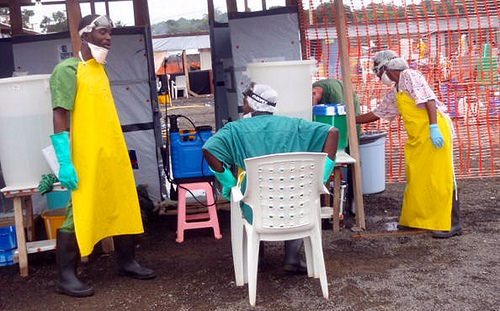
December 10, 2014; Time Magazine
This year, the much-awaited announcement of Time Magazine’s “Person of the Year” should remind us in this sector that there is some consciousness and admiration out there about the power of mission-based collective effort. And that’s who we are, remember?
Sign up for our free newsletters
Subscribe to NPQ's newsletters to have our top stories delivered directly to your inbox.
By signing up, you agree to our privacy policy and terms of use, and to receive messages from NPQ and our partners.
The announcement of Time’s “Person of the Year” usually draws attention and a little controversy. Such famous faces as Mahatma Gandhi (1930), the Apollo 8 astronauts (1968), and almost every U.S. president since FDR have graced the magazine’s cover as part of this annual tradition. The Person of the Year need not be a singular individual, of course. Three years ago, on the heels of the Occupy movement, Time chose “The Protester,” a representation of the Arab Spring uprisings from Egypt to Libya and Syria as well as other protests in other nations from 2011, Russia and Greece among them. In 2003, Time chose “The American Soldier,” as the Iraq War was getting started; in 1969, it was “Middle Americans,” those deemed the “silent majority” by then-president Richard Nixon. And if you were alive and paying attention in 2006, congratulations—you, too, were Person of the Year.
This year, Time bestowed the title to “the Ebola fighters,” collectively representing the medical personnel, from the volunteer charity workers to the ambulance drivers and burial teams, that helped to manage one of the worst medical crises of our time. While citizens of the West African nation of Guinea began contracting Ebola back in December 2013, it wasn’t until the media became interested in late summer 2014 that the reality of the impact became clear. Hundreds were dying as the epidemic spread to neighboring countries such as Sierra Leone and Liberia. As the World Health Organization wrestled with managing the growing number of infected and international aid efforts were bungled by red tape, the sole constant in the mess were the humanitarian aid workers, like Doctors Without Borders (MSF) and Samaritan’s Purse, among others. These individuals include many who worked relentlessly with patients, risking their lives—some losing them along the way.
Each year, Time’s choice for “Person of the Year” gives NPQ an opportunity to reflect on the important social or political issue embodied by the person or the conglomerate of people. In this case, it’s the heroic, ongoing humanitarian response to the Ebola epidemic. This is an opportunity for reflection on society, like the broken healthcare systems that exacerbated the epidemic or the international failure to consistently deliver and distribute much-needed supplies, some as basic as beds and linens, to West African hospitals and treatment centers. On Monday, Sierra Leone saw 58 new cases of Ebola, and as late as Tuesday, junior doctors in Sierra Leone have gone on strike to protest the inadequate equipment and supplies available. “We have decided to withhold our services until a proper and more conducive atmosphere is created for us to continue our work,” said the Junior Doctors Association. In the last four months, Sierra Leone has lost 8 percent of its available doctors to the disease.
As shown by such choices as Adolf Hitler and Joseph Stalin in the years around World War II and Ayatollah Ruhollah Khomeini in 1979, being the Person of the Year isn’t an endorsement so much as a statement of significance. While some Time covers require some explanation, 2014’s cover, with its masked medical worker, in many ways representing the nonprofit sector, does not. Still, people working in civil society should understand that this acknowledgement of the innumerable and unnamed volunteers and nonprofits in the fight against Ebola provides a glimpse of what many value about the humanitarian portion of our work.—Shafaq Hasan













